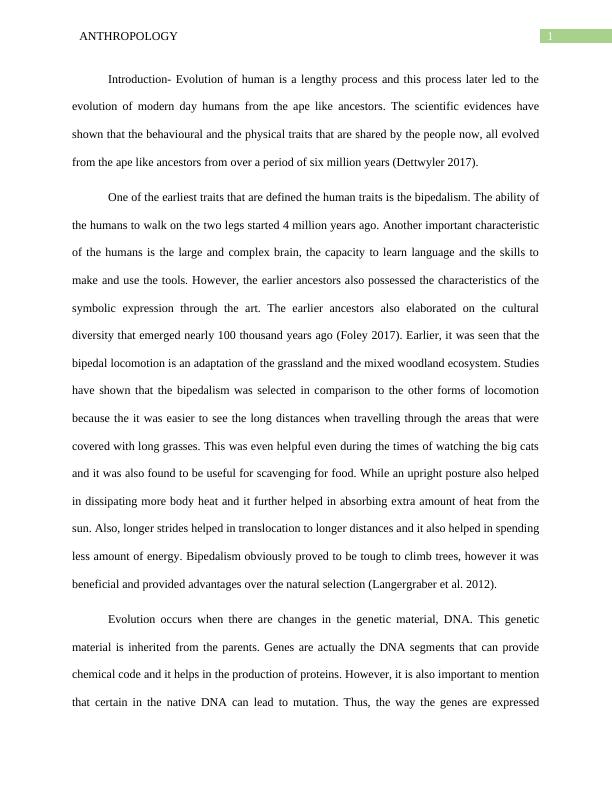Anthropology | Desklib .
4 Pages759 Words493 Views
Added on 2023-05-28
About This Document
This article delves into the evolution of humans from their ape-like ancestors, highlighting the importance of bipedalism, genetic variations, and cultural diversity. It discusses how genetic material is inherited and how changes in genes affect an organism's behavior and development. The article concludes by emphasizing that evolution changes the entire population of a species, not just a single individual.
Anthropology | Desklib .
Added on 2023-05-28
ShareRelated Documents
End of preview
Want to access all the pages? Upload your documents or become a member.
Biocultural Evolution Essay
|3
|688
|379
History and Theoretical Framework of Human Bipedalism and Stone Tool Evolution
|8
|2351
|267
Evolution: The Theories of Charles Darwin and Evidence Supporting Them
|7
|1912
|131
Evolution and Darwin’s Theory
|5
|961
|375
Species Diversity: Humans Vs. Chimpanzees
|6
|1137
|373
Human Evolution Assignment PDF
|12
|2512
|122


